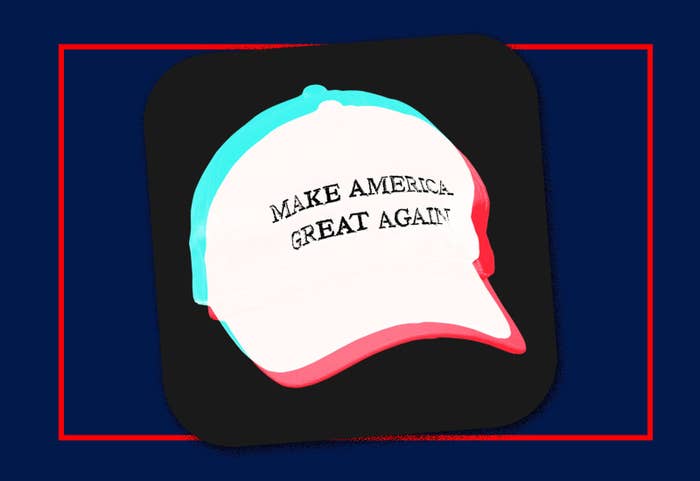Scientists say new strain of swine flu virus is spreading to humans in China
The virus should be “urgently” controlled to avoid another pandemic, scientists say in a new study.
![]() A new strain of the H1N1 swine flu virus is spreading silently in workers on pig farms in China, according to a new study.
A new strain of the H1N1 swine flu virus is spreading silently in workers on pig farms in China, according to a new study.
–Alex Kraus/Bloomberg
By Mike Ives,
The New York Times Company
July 1, 2020
H1N1 is highly transmissible and spread around the world in 2009, killing about 285,000 people and morphing into seasonal flu.
The newer strain, known as G4 EA H1N1, has been common on China’s pig farms since 2016 and replicates efficiently in human airways, according to the study published Monday. So far, it has infected some people without causing disease, but health experts fear that could change without warning.
“G4 viruses have all the essential hallmarks of a candidate pandemic virus,” the study said, adding that controlling the spread in pigs and closely monitoring human populations “should be urgently implemented.”
The study, published online in the journal Proceedings of the National Academy of Sciences, is based on the surveillance of pigs in 10 Chinese provinces from 2011 to 2018. In the last three years of the study, researchers collected 338 blood samples from workers on 15 pig farms and 230 from people in nearby households.
The study found that 10.4% of the workers and 4.4% of the others tested positive for antibodies to G4 EA H1N1, and that workers between the ages of 18 and 35 tested positive at a higher rate: 20.5%.
Predicting risk is not a precise science, but close attention to the virus would be advisable, said Ian H. Brown, head of the virology department at Britain’s Animal and Plant Health Agency and one of two scientists who reviewed the paper before it was published.
“It may be that with further change in the virus it could become more aggressive in people much as SARS-CoV-2 has done,” Brown said in an email Tuesday, referring to the new coronavirus.
The study was sent for review in early December, weeks before the coronavirus outbreak in the Chinese city of Wuhan began making global headlines.
Li-Min Huang, director of the Division of Pediatric Infectious Diseases at National Taiwan University Hospital, said that a crucial next step would be finding out whether any of the infected workers at the pig farms had contracted the virus from humans, as well as whether any had spread the virus to their families.
“It’s a very important study, and the virus looks quite dangerous,” Huang said. “We need to be worried about any disease with the potential to spread human to human.”
Eurasian variations of H1N1 have been circulating in pigs in Europe and Asia for decades, the study said, but the incidence of G4 viruses in farmed Chinese pigs with respiratory symptoms began rising sharply after 2014.
Recent evidence “indicates that G4 EA H1N1 virus is a growing problem in pig farms, and the widespread circulation of G4 viruses in pigs inevitably increases their exposure to humans,” it said.
Asked about the new strain at a U.S. Senate hearing Tuesday, Dr. Anthony Fauci, the nation’s top infectious disease expert, said that it was not an “immediate threat” but “something we need to keep our eye on the just the way we did with in 2009 with the emergence of the swine flu.”
The study was a collaboration among government agencies in China, including the Center for Disease Control and Prevention, as well as the World Health Organization, scientists from several universities in China and the University of Nottingham in Britain. Brown teaches at the University of Nottingham but was not involved in the research.
The H1N1 virus that caused a pandemic in 2009 had a relatively low fatality rate, estimated at 0.02%. By contrast, the fatality rate of the 1918 flu pandemic was about 2.5% of its victims. But that virus killed an estimated 50 million, perhaps more, because it infected so many people and spread at a time when medical care was cruder.
Determining the fatality rate of the new coronavirus is a key question for epidemiologists, but one they may not be able to answer until the pandemic has ended.
China downplays potential new swine flu pandemic
01/07/2020 -

Chinese authorities have played down the pandemic threat of a new swine flu strain discovered in pigs Noel Celis AFP/File
Beijing (AFP)
China on Wednesday played down the threat of a new swine flu strain with pandemic potential that researchers discovered in pigs, saying the study is "not representative".
The deadly COVID-19 pandemic, which has now infected more than 10 million people worldwide, first emerged in China and is thought to have originated in bats and jumped to humans through an unknown intermediary animal.
The new swine flu strain found in China, according to the study published Monday in the US science journal PNAS, had "all the essential hallmarks" to infect humans and raised fears over another potential pandemic.
But China's foreign ministry moved to downplay fears on Wednesday.
"The G4 virus mentioned in the relevant report is a subtype of the H1N1 virus," foreign ministry spokesman Zhao Lijian said in a routine briefing.
"Experts have concluded that the sample size of the report is small and not representative."
Zhao added that "relevant departments and experts" will continue to step up monitoring of the disease, send warnings and handle it in a timely manner.
The new G4 swine flu strain is genetically descended from the H1N1 strain that caused a pandemic in 2009, according to the study, which was authored by scientists at Chinese universities and the Chinese Center for Disease Control and Prevention.
G4 was observed to be highly infectious, they said, replicating in human cells and causing more serious symptoms in ferrets than other viruses.
Researchers took 30,000 nasal swabs from slaughterhouse pigs in 10 Chinese provinces, allowing them to isolate 179 swine flu viruses.
According to the study, 10.4 percent of pig slaughterhouse workers tested had already been infected.
So far, there has been no evidence of human-to-human transmission. China did not elaborate further on how many had been infected by G4.
"It is of concern that human infection of G4 virus will further human adaptation and increase the risk of a human pandemic," the researchers wrote, calling for urgent measures to monitor people working with pigs.
© 2020 AFP
Dr. Anthony Fauci says new virus in China has traits of 2009 swine flu and 1918 pandemic flu
The virus, which scientists are calling “G4 EA H1N1,” has not yet been shown to infect humans but it is exhibiting “reassortment capabilities,” Fauci told the Senate Health, Education, Labor and Pensions Committee during a hearing Tuesday.
The H1N1 swine flu emerged in Mexico in April 2009, infecting 60.8 million people in the U.S. and at least 700 million worldwide. An estimated 151,700 to 575,400 people died from the virus across the globe, according to the CDC.
Fauci: New virus in China has traits of 2009 swine flu and 1918 pandemic flu
White House coronavirus advisor Dr. Anthony Fauci said Tuesday that U.S. health officials are keeping an eye on a new strain of flu carried by pigs in China that has characteristics of the 2009 H1N1 virus and 1918 pandemic flu.
The virus, which scientists are calling “G4 EA H1N1,” has not yet been shown to infect humans but it is exhibiting “reassortment capabilities,” Fauci, director of the National Institute of Allergy and Infectious Diseases, told the Senate Health, Education, Labor and Pensions Committee during a hearing.
“In other words, when you get a brand new virus that turns out to be a pandemic virus it’s either due to mutations and/or the reassortment or exchanges of genes,” he told lawmakers. “And they’re seeing virus in swine, in pigs now, that have characteristics of the 2009 H1N1, of the original 1918, which many of our flu viruses have remnants of that in it, as well as segments from other hosts, like swine.”
The H1N1 swine flu and 1918 pandemic flu were both considered horrific viruses that spread across the globe.
The H1N1 swine flu emerged in Mexico in April 2009, infecting 60.8 million people in the United States alone and at least 700 million worldwide. An estimated 151,700 to 575,400 people died from the virus across the globe, according to the Centers for Disease Control and Prevention. It is now seen as one of a variety of seasonal flu viruses.
The 1918 flu, which Fauci has often compared to Covid-19, is estimated to have killed between 30 million and 50 million people, according to the CDC. More than 20 million people died in World War I, by comparison.
The new strain that is spreading in pig farms in China has been identified as having “all the essential hallmarks of a candidate pandemic virus,” scientists say.
Fauci said Tuesday there’s always “the possibility that you might have another swine flu-type outbreak as we had in 2009.”
“It’s something that still is in the stage of examination,” he said. It’s not “an immediate threat where you’re seeing infections, but it’s something we need to keep our eye on, just the way we did in 2009 with the emergence of the swine flu.”
Fauci’s comments came as the coronavirus continues to rapidly spread across the U.S., with the seven-day average of new cases growing by 5% or more in at least 40 states, including Arizona, Texas, Florida and Oklahoma, according to a CNBC analysis of data compiled by Johns Hopkins University.
Public health officials and physicians have criticized the Trump administration’s lack of coordinated response to the virus. In recent weeks, President Donald Trump has downplayed the virus, saying the U.S. is nearing the end of the pandemic, contrary to experts in his own administration.
Earlier this month, Fauci said Covid-19 turned out to be his “worst nightmare” come to life as the coronavirus continues to rapidly spread across the globe.
He said the virus is “very different” from other outbreaks such as Ebola and HIV. The virus jumped from an animal host and has a high degree of transmissibility and mortality, he said. It is historically one of the worst pandemics the world has ever experienced, he said, adding people have compared it to the 1918 flu.
First detected in Wuhan, China, about six months ago, the new coronavirus has already infected more than 10.4 million people across the globe, killing more than 500,000.
On Tuesday, Fauci told lawmakers that he is concerned about the rise in new cases in places such as Texas and Florida.
He said reopening schools in the fall season will depend on the dynamics of the outbreak and the particular location of the school in question.
–Alex Kraus/Bloomberg
By Mike Ives,
The New York Times Company
July 1, 2020
HONG KONG — A new strain of the H1N1 swine flu virus is spreading silently in workers on pig farms in China and should be “urgently” controlled to avoid another pandemic, a team of scientists says in a new study.
H1N1 is highly transmissible and spread around the world in 2009, killing about 285,000 people and morphing into seasonal flu.
The newer strain, known as G4 EA H1N1, has been common on China’s pig farms since 2016 and replicates efficiently in human airways, according to the study published Monday. So far, it has infected some people without causing disease, but health experts fear that could change without warning.
“G4 viruses have all the essential hallmarks of a candidate pandemic virus,” the study said, adding that controlling the spread in pigs and closely monitoring human populations “should be urgently implemented.”
The study, published online in the journal Proceedings of the National Academy of Sciences, is based on the surveillance of pigs in 10 Chinese provinces from 2011 to 2018. In the last three years of the study, researchers collected 338 blood samples from workers on 15 pig farms and 230 from people in nearby households.
The study found that 10.4% of the workers and 4.4% of the others tested positive for antibodies to G4 EA H1N1, and that workers between the ages of 18 and 35 tested positive at a higher rate: 20.5%.
Predicting risk is not a precise science, but close attention to the virus would be advisable, said Ian H. Brown, head of the virology department at Britain’s Animal and Plant Health Agency and one of two scientists who reviewed the paper before it was published.
“It may be that with further change in the virus it could become more aggressive in people much as SARS-CoV-2 has done,” Brown said in an email Tuesday, referring to the new coronavirus.
The study was sent for review in early December, weeks before the coronavirus outbreak in the Chinese city of Wuhan began making global headlines.
Li-Min Huang, director of the Division of Pediatric Infectious Diseases at National Taiwan University Hospital, said that a crucial next step would be finding out whether any of the infected workers at the pig farms had contracted the virus from humans, as well as whether any had spread the virus to their families.
“It’s a very important study, and the virus looks quite dangerous,” Huang said. “We need to be worried about any disease with the potential to spread human to human.”
Eurasian variations of H1N1 have been circulating in pigs in Europe and Asia for decades, the study said, but the incidence of G4 viruses in farmed Chinese pigs with respiratory symptoms began rising sharply after 2014.
Recent evidence “indicates that G4 EA H1N1 virus is a growing problem in pig farms, and the widespread circulation of G4 viruses in pigs inevitably increases their exposure to humans,” it said.
Asked about the new strain at a U.S. Senate hearing Tuesday, Dr. Anthony Fauci, the nation’s top infectious disease expert, said that it was not an “immediate threat” but “something we need to keep our eye on the just the way we did with in 2009 with the emergence of the swine flu.”
The study was a collaboration among government agencies in China, including the Center for Disease Control and Prevention, as well as the World Health Organization, scientists from several universities in China and the University of Nottingham in Britain. Brown teaches at the University of Nottingham but was not involved in the research.
The H1N1 virus that caused a pandemic in 2009 had a relatively low fatality rate, estimated at 0.02%. By contrast, the fatality rate of the 1918 flu pandemic was about 2.5% of its victims. But that virus killed an estimated 50 million, perhaps more, because it infected so many people and spread at a time when medical care was cruder.
Determining the fatality rate of the new coronavirus is a key question for epidemiologists, but one they may not be able to answer until the pandemic has ended.
China downplays potential new swine flu pandemic
01/07/2020 -

Chinese authorities have played down the pandemic threat of a new swine flu strain discovered in pigs Noel Celis AFP/File
Beijing (AFP)
China on Wednesday played down the threat of a new swine flu strain with pandemic potential that researchers discovered in pigs, saying the study is "not representative".
The deadly COVID-19 pandemic, which has now infected more than 10 million people worldwide, first emerged in China and is thought to have originated in bats and jumped to humans through an unknown intermediary animal.
The new swine flu strain found in China, according to the study published Monday in the US science journal PNAS, had "all the essential hallmarks" to infect humans and raised fears over another potential pandemic.
But China's foreign ministry moved to downplay fears on Wednesday.
"The G4 virus mentioned in the relevant report is a subtype of the H1N1 virus," foreign ministry spokesman Zhao Lijian said in a routine briefing.
"Experts have concluded that the sample size of the report is small and not representative."
Zhao added that "relevant departments and experts" will continue to step up monitoring of the disease, send warnings and handle it in a timely manner.
The new G4 swine flu strain is genetically descended from the H1N1 strain that caused a pandemic in 2009, according to the study, which was authored by scientists at Chinese universities and the Chinese Center for Disease Control and Prevention.
G4 was observed to be highly infectious, they said, replicating in human cells and causing more serious symptoms in ferrets than other viruses.
Researchers took 30,000 nasal swabs from slaughterhouse pigs in 10 Chinese provinces, allowing them to isolate 179 swine flu viruses.
According to the study, 10.4 percent of pig slaughterhouse workers tested had already been infected.
So far, there has been no evidence of human-to-human transmission. China did not elaborate further on how many had been infected by G4.
"It is of concern that human infection of G4 virus will further human adaptation and increase the risk of a human pandemic," the researchers wrote, calling for urgent measures to monitor people working with pigs.
© 2020 AFP
Dr. Anthony Fauci says new virus in China has traits of 2009 swine flu and 1918 pandemic flu
WED, JUL 1 2020
Berkeley Lovelace Jr.@BERKELEYJR
KEY POINTS
White House coronavirus advisor Dr. Anthony Fauci said U.S. health officials are keeping an eye on a new strain of flu carried by pigs in China that has characteristics of the 2009 H1N1 virus and 1918 pandemic flu.
Berkeley Lovelace Jr.@BERKELEYJR
KEY POINTS
White House coronavirus advisor Dr. Anthony Fauci said U.S. health officials are keeping an eye on a new strain of flu carried by pigs in China that has characteristics of the 2009 H1N1 virus and 1918 pandemic flu.
The virus, which scientists are calling “G4 EA H1N1,” has not yet been shown to infect humans but it is exhibiting “reassortment capabilities,” Fauci told the Senate Health, Education, Labor and Pensions Committee during a hearing Tuesday.
The H1N1 swine flu emerged in Mexico in April 2009, infecting 60.8 million people in the U.S. and at least 700 million worldwide. An estimated 151,700 to 575,400 people died from the virus across the globe, according to the CDC.
Fauci: New virus in China has traits of 2009 swine flu and 1918 pandemic flu
White House coronavirus advisor Dr. Anthony Fauci said Tuesday that U.S. health officials are keeping an eye on a new strain of flu carried by pigs in China that has characteristics of the 2009 H1N1 virus and 1918 pandemic flu.
The virus, which scientists are calling “G4 EA H1N1,” has not yet been shown to infect humans but it is exhibiting “reassortment capabilities,” Fauci, director of the National Institute of Allergy and Infectious Diseases, told the Senate Health, Education, Labor and Pensions Committee during a hearing.
“In other words, when you get a brand new virus that turns out to be a pandemic virus it’s either due to mutations and/or the reassortment or exchanges of genes,” he told lawmakers. “And they’re seeing virus in swine, in pigs now, that have characteristics of the 2009 H1N1, of the original 1918, which many of our flu viruses have remnants of that in it, as well as segments from other hosts, like swine.”
The H1N1 swine flu and 1918 pandemic flu were both considered horrific viruses that spread across the globe.
The H1N1 swine flu emerged in Mexico in April 2009, infecting 60.8 million people in the United States alone and at least 700 million worldwide. An estimated 151,700 to 575,400 people died from the virus across the globe, according to the Centers for Disease Control and Prevention. It is now seen as one of a variety of seasonal flu viruses.
The 1918 flu, which Fauci has often compared to Covid-19, is estimated to have killed between 30 million and 50 million people, according to the CDC. More than 20 million people died in World War I, by comparison.
The new strain that is spreading in pig farms in China has been identified as having “all the essential hallmarks of a candidate pandemic virus,” scientists say.
Fauci said Tuesday there’s always “the possibility that you might have another swine flu-type outbreak as we had in 2009.”
“It’s something that still is in the stage of examination,” he said. It’s not “an immediate threat where you’re seeing infections, but it’s something we need to keep our eye on, just the way we did in 2009 with the emergence of the swine flu.”
Fauci’s comments came as the coronavirus continues to rapidly spread across the U.S., with the seven-day average of new cases growing by 5% or more in at least 40 states, including Arizona, Texas, Florida and Oklahoma, according to a CNBC analysis of data compiled by Johns Hopkins University.
Public health officials and physicians have criticized the Trump administration’s lack of coordinated response to the virus. In recent weeks, President Donald Trump has downplayed the virus, saying the U.S. is nearing the end of the pandemic, contrary to experts in his own administration.
Earlier this month, Fauci said Covid-19 turned out to be his “worst nightmare” come to life as the coronavirus continues to rapidly spread across the globe.
He said the virus is “very different” from other outbreaks such as Ebola and HIV. The virus jumped from an animal host and has a high degree of transmissibility and mortality, he said. It is historically one of the worst pandemics the world has ever experienced, he said, adding people have compared it to the 1918 flu.
First detected in Wuhan, China, about six months ago, the new coronavirus has already infected more than 10.4 million people across the globe, killing more than 500,000.
On Tuesday, Fauci told lawmakers that he is concerned about the rise in new cases in places such as Texas and Florida.
He said reopening schools in the fall season will depend on the dynamics of the outbreak and the particular location of the school in question.

 Regional map showing average number of healthy working years expected from age 50 in England. Credit: Parker et al, 2020, Author provided
Regional map showing average number of healthy working years expected from age 50 in England. Credit: Parker et al, 2020, Author provided






